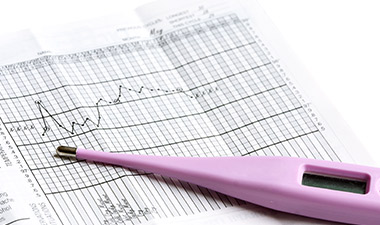In today’s fast-paced world, understanding our bodies can often take a backseat. However, when it comes to menstrual health, taking the time to track and understand your cycle can have profound benefits. Whether you’re looking to conceive, manage symptoms of PMS, or simply get a better grasp of your overall health, tracking your menstrual cycle is a powerful tool.
Why Track Your Menstrual Cycle?
Tracking your menstrual cycle means noting down all the signs and symptoms you experience throughout the month. This can include ovulation pain, PMS before your period, changes in cervical mucus, the quality of your bleed (e.g., heavy, light, days of spotting), and energy levels around your bleed.
By paying attention to these details, you can gain important insights into how your hormones are behaving and identify areas that may need attention. This practice helps you live in harmony with your menstrual cycle, making it work for you, not against you.
Understanding the patterns in your cycle can highlight hormonal imbalances. This knowledge allows for targeted adjustments in lifestyle or treatments to promote balance.
Tracking your cycle helps identify your fertile windows and potential issues with ovulation. This information is crucial for anyone trying to conceive, as a well-balanced cycle increases the likelihood of pregnancy.
Improved menstrual health can lead to better overall well-being. By recognizing and addressing hormonal fluctuations, you can enhance both your reproductive health and general health.
Tailoring treatments and lifestyle changes to support your unique cycle ensures that your approach is personalised and effective. Whether you’re looking to conceive or simply want to understand your body better, tracking provides a roadmap to optimal health.
Charting Your Basal Body Temperature
One of the most effective ways to understand your menstrual cycle is by charting your Basal Body Temperature (BBT). This simple daily practice can reveal a lot about your hormonal interactions. By supporting your menstrual cycle, it becomes easier to track your fertile days and identify where your hormones might need some tender loving care. Below is an example of an irregular BBT chart, often seen in those under stress, with no clear signs of ovulation.
How to Chart Your BBT:
1. Purchase a fertility thermometer
2. Download an app: Use an app like Kindra to chart your temperature.
3. Take your temperature: Do this as soon as you wake up in the morning before getting out of bed or having a drink.
4. Ensure uninterrupted sleep: You must have had at least 2 hours of uninterrupted sleep before taking your temperature.
5. Chart for at least 3 months: This duration helps you understand your hormonal patterns.
The work I do with clients at our fertility acupuncture clinic aims to balance their cycles and ensure their hormones are in harmony. Below is an example of a well-balanced cycle, which is what we aim for in treatment, as we know a pregnancy is more likely to occur with a chart like this compared to one that is more erratic.
By tracking your menstrual cycle and BBT, you gain valuable insights into your reproductive health. This proactive approach allows you to maintain hormonal balance, support fertility, and improve your overall health. Start charting today and take control of your menstrual health journey!
If you would like any help with your fertility journey then please book a complimentary discovery call or skip straight to a consultation here.
